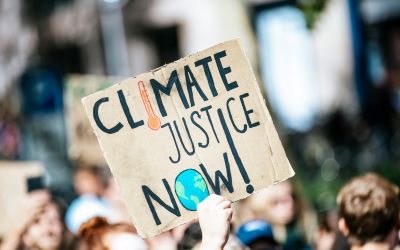Is carbon transparency the key to a binding agreement?
Transparent carbon accounting from a whole lifecycle perspective is how countries and individual organisations can fully grasp their total carbon emissions.

Transparent carbon accounting from a whole lifecycle perspective is how countries and individual organisations can fully grasp their total carbon emissions.
This is the opinion given on EthicalCorp.com by Dr Ivor John, vice-president of climate change services at RMA, a Lloyd's Register company.
To date, the International Panel on Climate Change (IPCC) rules for carbon accounting have focused on direct emissions per country. This, Dr. John argues, is a flawed mechanism. The leakage of emissions from developed to developing countries continues to grow and the time has come for countries and large organisations to accept responsibility for their entire supply chain so that effective action can begin, he said.
Chinese officials attending the Tianjin Climate Change Conference in October voiced concerns that demonstrate the broad issues posed by carbon emissions moving along the supply chain.
They stated that it is unfair for the US to accuse China of unreasonable industrialisation, since it is the West which benefits economically from the China dividend. The country's rapidly increasing energy use and emissions have been caused in part by the surge of cheap manufactured export goods, with carbon measurement paying little regard to the rest of the supply chain.
Perceived fairness continues to be an obstacle that threatens international negotiations. The focus of the UN climate conference in Copenhagen last year, on who is to blame for global warming and who has most economic rights to continue emissions, has inhibited progress in seeking ways to resolve climate change.
What can be expected from developing nations as their economies and standards of living catch up, is a controversial issue. However, the issue that should not be ignored, suggests Dr. John, is that globalisation has moved emissions down the supply chain to producers and manufacturers, and in many respects this is being overlooked by developed nations as well as international carbon accounting mechanisms.
There must be greater transparency, and it is important to take a hard look at how this contentious issue feeds in to the development of nations' emission reduction responsibilities, said Dr. John.
The push to listen to the full picture of the science of climate change may also aid in curbing what is termed "carbon blindness"-- the fallacy that we can solve the greenhouse gas problem while ignoring the other ecological limits our planet is faced with.
Often climate efforts are focused too narrowly, with a lot of emphasis on carbon trading, and other trading mechanisms. Such sustainability methods negate the real underlying issues.
Going beyond just cost effective mediums and recognising carbon emissions reduction as a responsibility for every individual and corporation have some way to go. Pivotal to businesses is that broadening their insight into the entire carbon lifecycle is a road towards not just a lower carbon footprint but also corporate competitiveness and a growing economy.
An increasing number of organisations around the world are routinely measuring their scope 1 and 2 emissions either voluntarily or for regulatory reasons, according to Dr. John. However, few organisations measure their scope 3 emissions. According to the UN Environment Programme, scope 3 emissions are all the indirect emissions occurring from outsourced activities. Responsibility for these emissions is often lost once the operation is outsourced.
In January 2010, the World Resources Institute (WRI) and the World Business Council for Sustainable Development (WBCSD) launched a new draft standard as part of the Greenhouse Gas Protocol Initiative. The new scope 3 standard, when finalised, will facilitate organisations to evaluate emissions from their entire supply chains using a consistent, measurable method. It will also incorporate the use and disposal of the products they sell.
According to the Greenhouse Gas Protocol Initiative, the two standards- the Product Accounting and Reporting Standard and the Corporate Value Chain (scope 3) Accounting and Reporting Standard- supplement the existing Corporate Accounting and Reporting Standard, which has become the global framework for GHG reporting by companies.
Sixty-two companies from a variety of countries and sectors tested the standards over a 6 month period and submitted positive comprehensive feedback on their usability. This is the final step in the development process and will be used to make additional revisions, according to the Initiative. The new standards are expected to be finalized by early 2011 and published in the spring of that year.
Recognition of whole supply-chain emissions within international carbon accounting methods is something which could be considered further in Cancun. The 16th Conference of Parties (COP16) will be held in Mexico from 29th November to 10th December.
Dr. John believes it could agree a methodology for the fair allocation of emissions. With the achievement of such measurements, the issues of fairness could cease to be the central issue in climate talks, opening discussion of the real fundamental issues. An agreement on a carbon accounting mechanism could help towards forming a legally binding international agreement, however whether or not China will budge on its apparent unwillingness to make a binding agreement, is to be seen.
Author: Marianna Keen | Climate Action
Image: Taras Kalapun | Flickr






